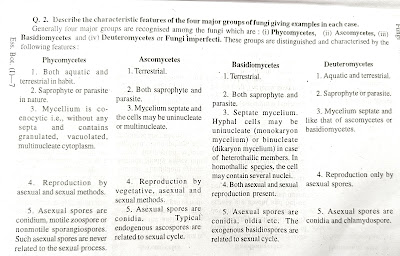Affinities of Anthoceros with other members.
Affinities of Anthoceros with other members. Anthoceros shows affinity with algae, members of Hepticopsida and Bryopsida of Bryophyta and Pteridophyta.The affinity and relationship of Anthoceros with green algae lies in the presence of a single large chloroplast together with a pyrenoid in cach cell of the gametophyte and in the formation of biciliated sperms. Anthoceros shows affinity with members of Hepaticopsida such as Riccia, Marchantia, etc. in the construction and structure of sex organs and in the apical growth of the thallus.It has affinity with members of Bryopsida i.e. Polytrichum, in the structure such as presence of columella, reduction of sporogenous tissue etc. and development of sporogonium. The spore production from amphithecium resembles the condition of that in Sphagnum. Anthoceros also shows sunken archegonium and development of antheridium from hypodermal initial cell like Pteridophyta. Highly developed sporophyte having photosynthetic tissue, functional stomata, i...




